

This is Part 2of a 2 part article.
This picture shows an incomplete scratch coat. I need to mix a second batch but I also wanted you to see the detail showing the DURABOND packed into the cracks.
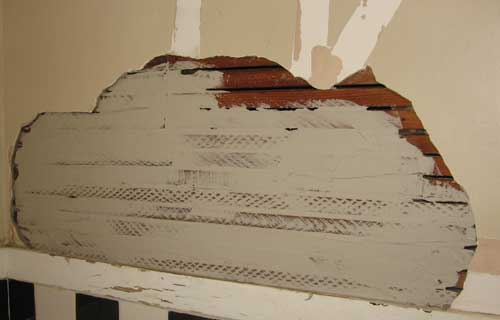
This picture shows the freshly applied scratch coat. Once this is set we can move on to the filler coats.
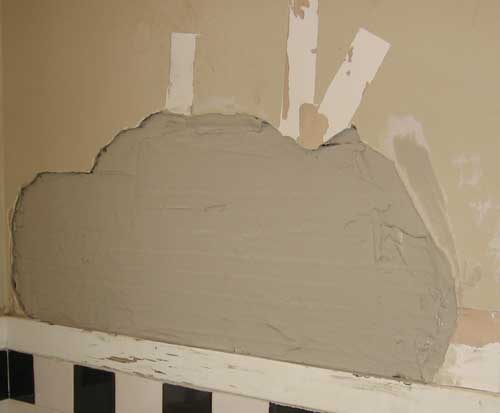
I am going to do this a little differently from what I normally do to illustrate a procedure that might make your first repair a lot easier to do. Normally I just slather on a few thin stripes the width of the drywall knife. This time I am going to screw some cheater boards to the wall to act as depth guides. The front side of the board is a little less than 1/8" below where the finished wall surface will be. When those are set I will remove the guide boards and fill the voids between the previously applied coats.
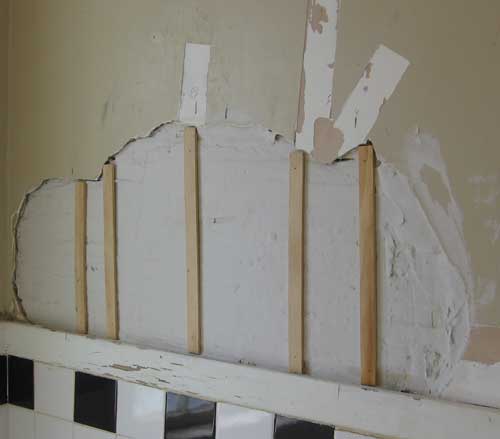
This picture shows the guide boards in place and the wider sections filled with fresh unset DURABOND. For a larger repair I would have used mortar mix for the scratch coat; but for this repair one bag of DURABOND did the entire job.
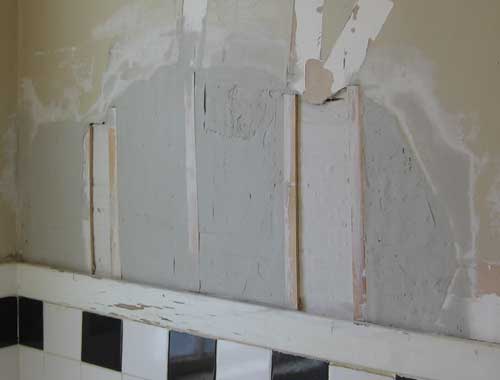
Then the boards are removed and the remaining area is filled with DURABOND. Then the application of the sandable top coat begins. I used a setting type 45 minute compound for that and applied it across the width of the existing DURABOND coat which is slightly lower than the final finished wall. This process is exactly the same as a deep skim coating. Coats are applied in ribbons and the voids are filled in until you have a smooth wall.
This picture shows an almost smooth wall where some light sanding and a few more coats of mud will make look like new.
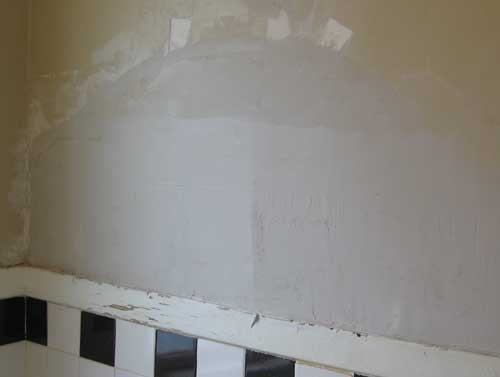
Unfortunately another project called and I never got around to taking a picture of the final finished wall. Probably just as well as I wound up tearing it all out and completely redoing that bathroom a few years later. But that is another article.